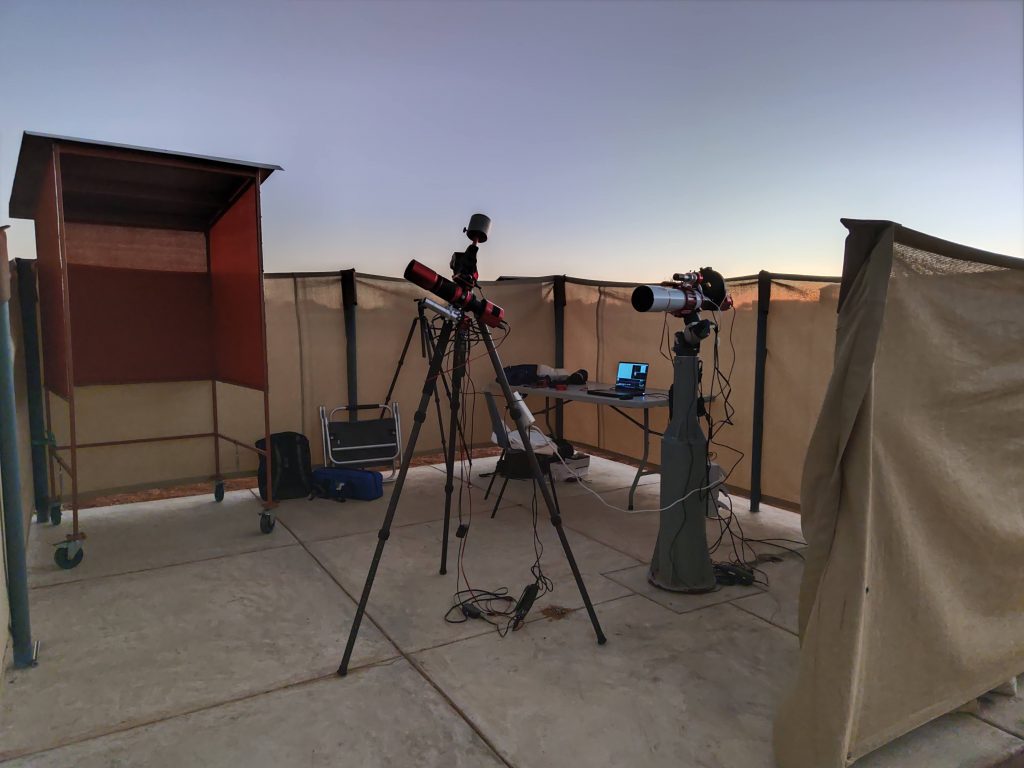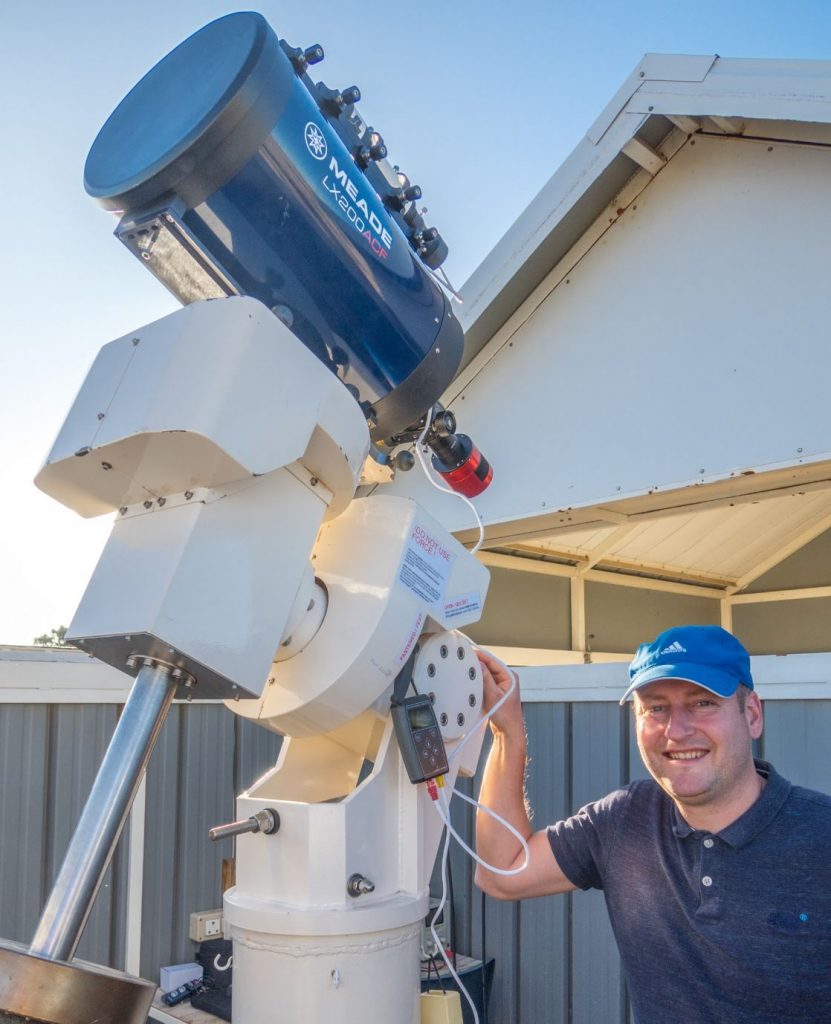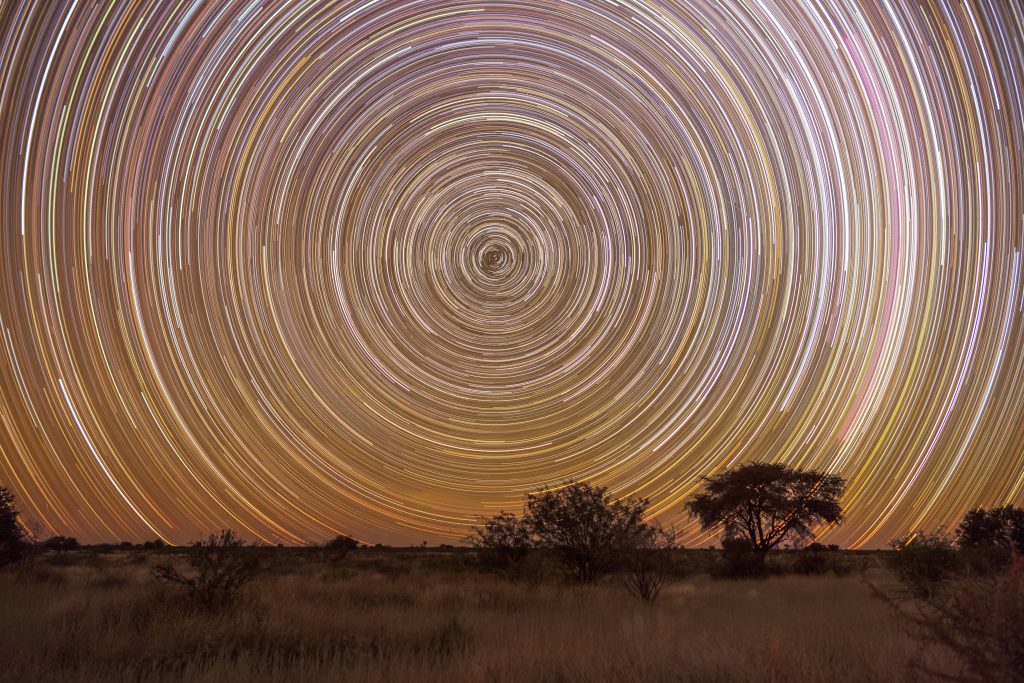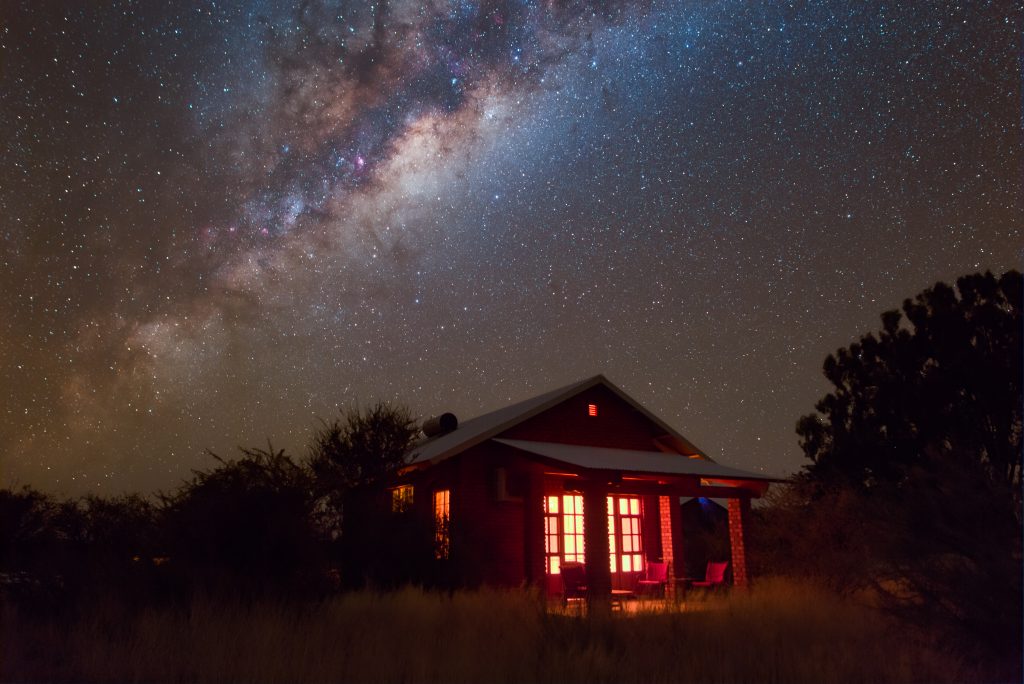As a passionate astrophotographer, I have been dreaming about the southern sky. Obviously, the best conditions are in Chile, the home of ESO European Southern Observatory. I read a couple of the travel blogs from Chile and yes this is the place to be with a telescope. However, I live in Central Europe, and getting to Chile is not that straightforward. Once I was browsing through the APOD (astronomy picture of the day) and found a beautiful picture of the Rho Ophiuchi. By reading the credits, I found out that this picture was taken in Namibia, specifically in the Kalahari desert. Well, I was hooked. I found out that astro-tourism is a regular business in Namibia. There are many farms offering telescopes/mounts to rent. The weather in winter (May – September) is basically guaranteed (here is the webpage with records of the cloud cover). Moreover, it’s very dry, so the sky is transparent. In other words, the conditions for astrophotography are excellent. I quickly started to search for accommodation during the next new Moon phase. A couple of farms were already booked out, but I found a place at Kiripotib astro farm. I cannot describe how lucky I was. The farm Kiripotib is run by a couple Hans and Claudia von Hase, very nice and friendly people. Not just them, but their whole stuff – Abigale, Caterina, Mike, and others were excellent hosts. The farm has two seasons. Summer (European winter) is a gliding season. There are two runways directly next to the farm. Winter (European summer) is an astro-season. For this purpose, there are 12 platforms and one roll-off roof observatory roughly 300 m from the farm. The platforms are equipped with 220 V sockets and each has a solid pier, wind protection, a table, and chairs. Basically, all that is required for serious astrophotography. Moreover, there is a wifi coverage there. The signal is not strong, but I was able to download a driver directly from the platform. For each new Moon phase, a guide comes from Germany to take care of the visitors to make sure that the rented equipment will be properly installed. For our stay, Stefan Lenz was our guide. He is a very experienced astrophotographer who won APOD last year.

As you can see, I gave up on the Newtonian portable telescope and replaced it with a refractor. The reason is that I bought a new camera for this trip. Specifically, ZWO ASI 2600MM, which has very small pixels. I was not able to get the stars round at the edges even with a perfectly collimated telescope, no matter which coma corrector I used. I simply gave up and ordered SharpStar 94 EPDH with a focal reducer. I sacrificed the aperture, but the stars are small and round in any corner of an APS-C sensor. I also took the portable refractor WO RedCat 51, combined with ZWO ASI 071MC. I wanted to rent the Newtonian telescope at Kiripotib, but it was already booked, so the only option was to rent Meade 10″ ACF. Stefan helped me to set it up and I used this scope mainly for galaxies like NGC 5128 Centaurus A Galaxy or NGC 6744 Galaxy or the planet Saturn.

A typical day at Kiripotib looks like that: late breakfast at 10:30. After breakfast one can take a nap or try pro process the pictures which were taken the previous day. In the afternoon coffee with a cake is served at 14:00. There are many things to do after the cake. For example, one can hike to the aloe trees:
Or to take a biking trip and meet the wildlife.
The dinner is served at 18:00 and around 19:00 it was already getting dark. A short walk to the platform and the show can start. The Milky Way was rising from the east. Honestly, I haven’t seen such a bright core in my life. It was a stunning view and I managed to capture the whole arc. However, everything didn’t go according to plan. First two nights I was struggling with my new laptop. The default power mode of Windows 11 is set to go to sleep after 20 minutes even if plugged in. Since I was managing 3 mounts, it took me a while to figure it out. Another problem was the polar alignment. In the northern hemisphere, we have Polaris. It is a very bright star, which can be located easily. However, in the southern hemisphere, there is Sigma Octantis, which should serve the purpose. But it is not a bright star and there are many similar stars, having the same brightness. For RST 135 mount I took PoleMaster. With this device it was doable, but it took me an hour to find the pattern. The situation was much more challenging with the iOptron Skyguider Pro. When I looked through the polar scope, I was completely unable to find the Sigma Octantis. The first two nights I was just guessing where the Southern celestial pole is. Hint for anyone who wants to do astrophotography in the Southern hemisphere for the first time: get prepared for the struggle with the polar alignment! Fortunately, I had the old ASIAir with me. There is a simple procedure for the polar alignment by plate solving of two pictures mutually rotated. This was a life-saving feature. The third issue I had was the automatic focuser. I knew that the refractors suffer from a focal drift if the temperature changes. Therefore, I equipped the SharpStar with ZWO electronic focuser. However, one needs to set up how many steps will be used for the focus sweep. I set up too small steps and in some cases, the perfect V-curve was not found, so some pictures were not sharp. I found a tutorial on YouTube on how to set it up properly. After solving all these issues I was finally ready for serious astrophotography. The primary target was obviously the Eta Carina nebula – a highlight of the Southern hemisphere. Secondary targets were NGC 5128 Centaurus A galaxy, NGC 6744 galaxy, NGC 6752 Globular Cluster, IC 2944 Running Chicken Nebula, NGC 5139 Omega Centauri, NGC 292 Small Magellanic Cloud, IC 4628 Prawn Nebula, NGC 2060 Tarantula Nebula, Norma Star Cloud, IC 2602 Southern Pleiades, Vela Supernova Remnant, NGC 6357 Lobster Nebula NGC 6334 Cat’s Paw Nebula, NGC 6188 Rim Nebula. One night I left the tripod with Canon EOS 6D + Samyang 24mm@f2.8 in front of the platform, set iso 1600, exposure 120s, and let it shoot until the battery died. It made 135 photos and by combining them I got such lovely star trails:

It was a very intensive 9 nights not disturbed by the clouds, wind, or light pollution. The conditions significantly exceeded my expectations. I have to admit that I did astrophotography for the first time in the proper place. There are still some deep-space objects on my list, so there is a reason to come back next year.
Final day and packing the rigs. Stefan came to help me 🙂
On the last day, I took a picture of the house where we stayed with the Milky Way in the background:

Namibia is not just an astrotourism, most people visit Namibia for different reasons. There is Etosha Nationalpark in the northern part of Namibia where wild animals can be seen, Fish River Canyon (Southern Namibia) is the largest canyon in Africa. There are definitely many places to visit. Unfortunately, we had only 3 days to travel around, so we decided to hire a car and make a trip to Sossusvlei. It was a very spectacular place. The deep blue color of the sky is mixed with the orange dunes.
Conclusions
There are still some deep space objects in the Southern sky, which I haven’t captured. Moreover, there are many places in Namibia, which I want to visit. We will definitely come back.
